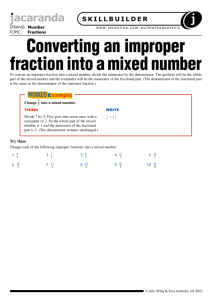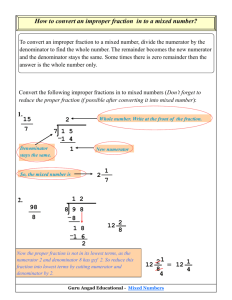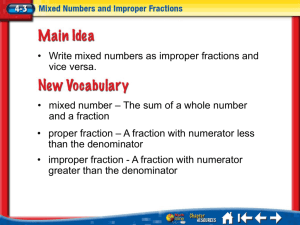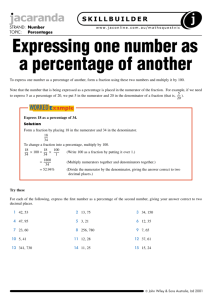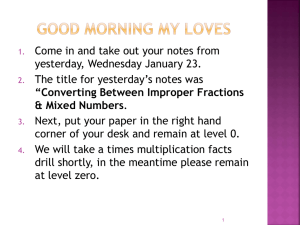Mixed Numbers and Improper Fractions
advertisement
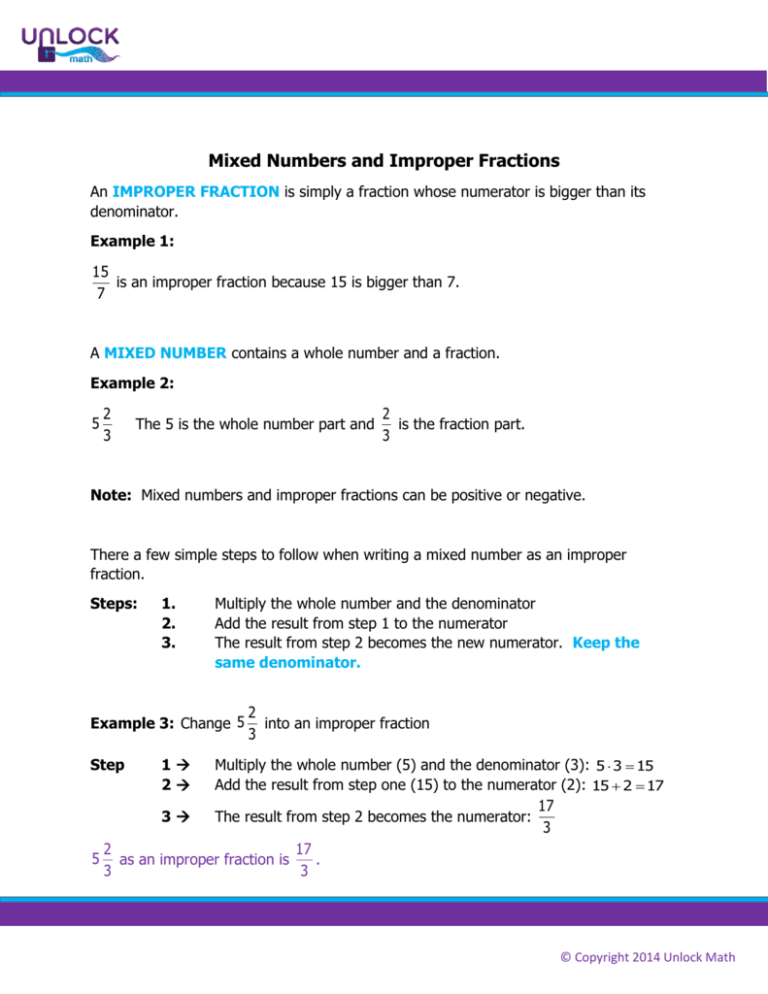
Mixed Numbers and Improper Fractions An IMPROPER FRACTION is simply a fraction whose numerator is bigger than its denominator. Example 1: 15 is an improper fraction because 15 is bigger than 7. 7 A MIXED NUMBER contains a whole number and a fraction. Example 2: 5 2 3 The 5 is the whole number part and 2 is the fraction part. 3 Note: Mixed numbers and improper fractions can be positive or negative. There a few simple steps to follow when writing a mixed number as an improper fraction. Steps: 1. 2. 3. Multiply the whole number and the denominator Add the result from step 1 to the numerator The result from step 2 becomes the new numerator. Keep the same denominator. Example 3: Change 5 Step 2 into an improper fraction 3 1 2 Multiply the whole number (5) and the denominator (3): 5 3 15 Add the result from step one (15) to the numerator (2): 15 2 17 17 3 The result from step 2 becomes the numerator: 3 2 17 5 as an improper fraction is . 3 3 © Copyright 2014 Unlock Math Example 4: Change 2 7 as an improper fraction 8 When there is a negative and you are changing a mixed number to an improper fraction, ignore the negative sign and “tack” it on at the end Step 1 2 2 8 16 16 7 23 3 23 3 Now “tack” on the negative 23 3 The entire mixed number is negative and that is why we “tack” it on at the end. How do we go the “other” way? In other words, how do we change an improper fraction into a mixed number? First decide how many times will the denominator go into the numerator evenly? This becomes the whole number in the mixed number. The remainder becomes the numerator. The denominator stays the same. Example 5: Change 21 into a mixed number. 11 We can see that 11 will divide into 21 only once so 1 is our whole number. The remainder is the new numerator. 11 stays as the denominator. Whole number 10 1 11 The denominator stays the same © Copyright 2014 Unlock Math

